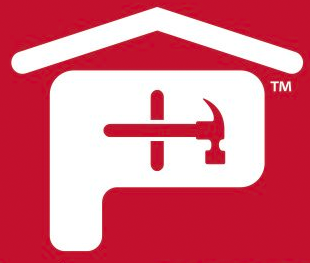Homeowners cannot see what is under their shingles, but every roof has additional components hidden from view that work together to protect the roof. All shingles must be installed over a water-resistant membrane called underlayment. It is the first component to be installed on a roof deck and is essential to protecting the house and its interior from the elements.
Asphalt-saturated felt is the most common application on residential roofs. Felt, as it is most commonly called, evolved substantially over the last century and is still an industry standard. From its humble origins as “tar paper” to the newest engineered products now available for homeowners, felt underlayment has changed as manufacturers work to find innovative ways to improve product performance.
Product Enhancements
Under certain conditions, traditional felt underlayment could develop heavy wrinkles, which led to buckling shingles. Traditional felt underlayment also tore easily, leaving a roof exposed to the elements. As the manufacturing process evolved, tar paper gave way to organic dry felt made with an asphalt saturate and organic fibers.
Organic felt underlayment products, made with a cellulose base and fiberglass, are more recent advances. Two popular thicknesses, #15 and #30, have been used for decades as standard underlayment. The #15 felt has a solid permeability rating and the #30 felt is more resistant to damage during installation of the roof material. The difference is obvious to the touch. Generally, #30 felt is thicker and stiffer.
Many years ago, felt was commonly fastened with staples, but roofers now use more efficient methods. In areas prone to high winds, plastic wind strips were developed for use along the edges to avoid tearing. Felt may also be attached in high-wind areas using plastic caps, which offer strong wind resistance and can help prevent leakage through holes made by fasteners.
Standards Of Performance
Roofers discovered that underlayment could fail for a number of reasons. To help protect homeowners, the American Society for Testing and Materials (ASTM) created a set of benchmarks to help consumers make an informed choice.
Check before purchasing underlayment to be sure the official ASTM ratings label is on the product. By doing this, homeowners can be certain their selected brand of felt underlayment meets ASTM standards.
Modern Felt
Atlas Roofing, the world’s largest producer of saturated felt underlayment, has put its innovative product knowledge and industry expertise to work to create the Gorilla Guard® line of engineered roof underlayment. Gorilla Guard and Gorilla Guard SPEC 30 have been designed to outperform traditional felt roof underlayment by adding a specially developed formulation of additives to the glass fibers. In third party independent testing, this engineered underlayment from Atlas had stronger tear resistance, yet was lighter than traditional felt underlayment. The advanced substrates added to the Gorilla Guard line of engineered underlayment allow it to lay flatter, resist wrinkling, and reduce slippage, so it’s tougher, yet easy to handle for a smooth application.
The more homeowners understand about roof components, the better they can make an informed decision. Complete details on all Atlas underlayment products can be found here on the Atlas Roofing website.




 Gear!
Gear! PRO LOGIN
PRO LOGIN